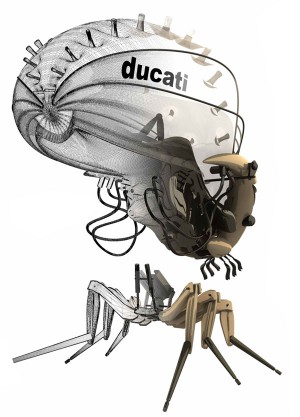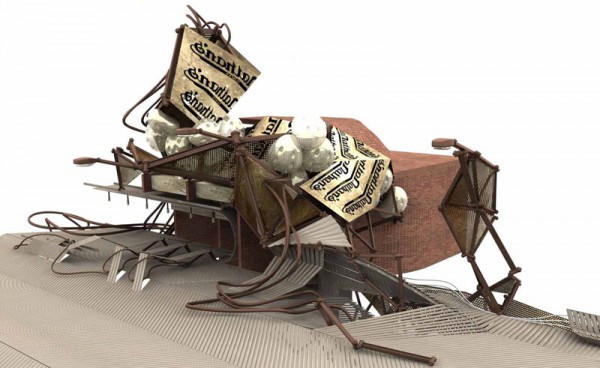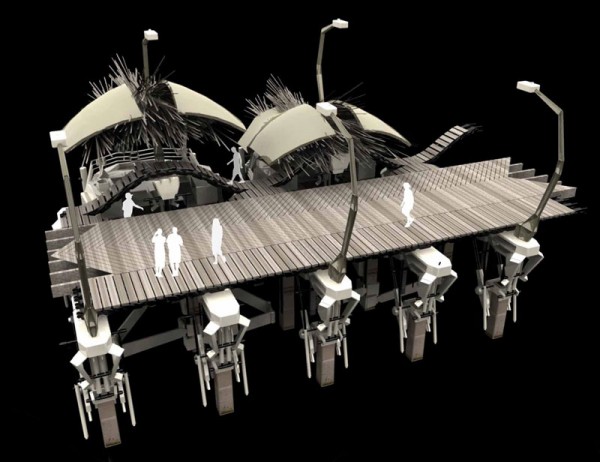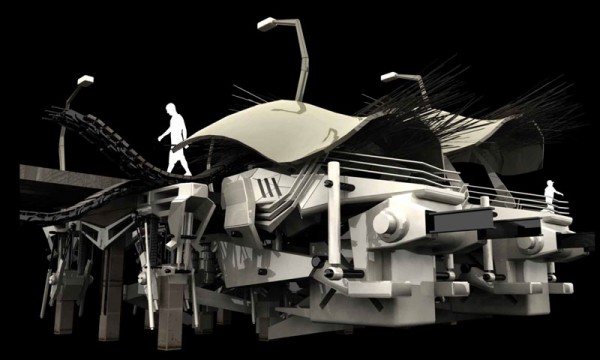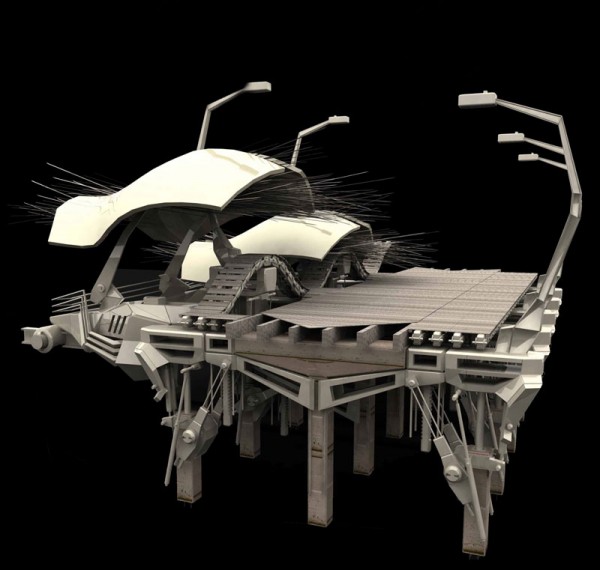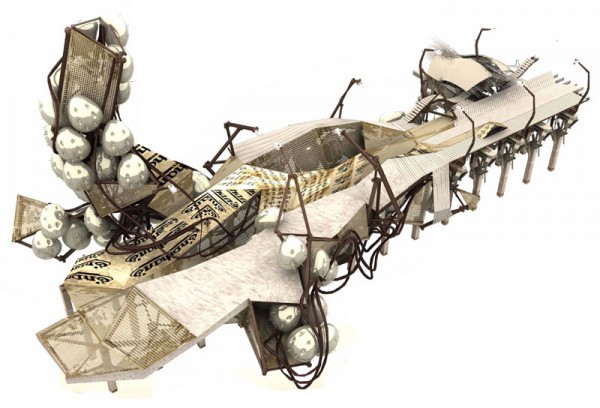First place of the 2007 Housing Competition
Project by: Eduardo McIntosh
Housing, like the majority of architectural genres, has always been a permanent construction attached to the ground for long-term residence. This project explores the possibility of creating a nomadic type of dwelling that should be seen as an industrial product rather than architecture.
In the 1960’s, Archigram designed a ‘Walking City’ in which an entire community could move from one place to another. Although a very innovative concept, it has been proven to be economically and technologically unfeasible over the last 50 years. ‘Capitalist Symbiosis’ is a small scale version of Archigram’s utopian vision, a small inhabitable transportation unit for the global resident. It is consumer product, just like ipods, laptops, and mobile phones.
In 1984, William Gibson envisioned in his cyberpunk novel ‘Neuromancer’ a world in which the boundaries and interactions between men and machine will blur, thus making it impossible to tell them apart. He described a world not far from ours, in which humans would only need minimal dwelling space, and in which virtual reality would provide an unlimited amount of space; the only traditional aspect of this proposal would be to provide shelter from the natural elements.
The aim of this scheme is to design a mobile structure that could continuously modify the urban configuration of a specific site. It could be seen as a benign parasite that will transform and enrich the city through consumer demand.
The first of two different projects is a summer bungalow that plugs into the sides of a modified robotic pier. The main goal is the creation of new programmatic opportunities through the interaction of the bungalow and the pier itself. There is a reconfiguration of the tectonic qualities of the host by the insertion of the guest.
The second proposal is a highly flexible living unit that nests into the left-over areas of the urban configuration of Coney Island in New York City, a former tourist destination which now hosts innumerable and seemingly incompatible realities. From Little Odessa with the Russian mafia, to the beach, piers, amusement park, and boardwalk, this neighborhood is the perfect playground for a new type of structure. We describe it as the colonization of Coney Island’s crevices by parasitic units aided by technology and driven by consumer demand.
Housing becomes the ultimate appliance and provides the owner the ability to reshape the environment. The constituent materials for this sporadic urban growth would be provided by private corporations in exchange for advertising. Eventually, this new type of dwelling would play different roles; the inside would be a private virtual space, while the exterior would continuously interact and modify its host.

